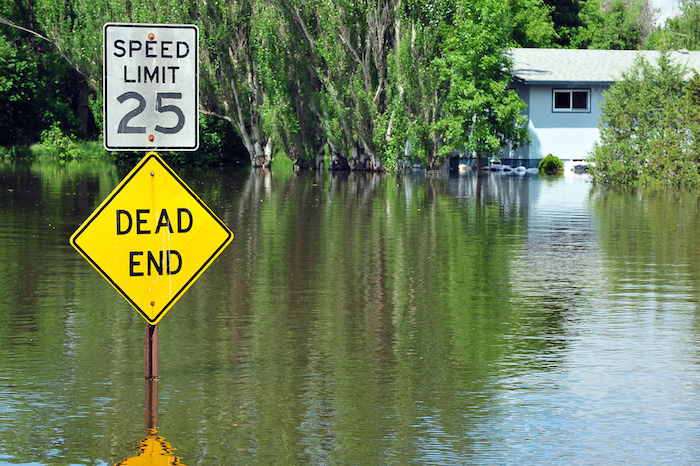Safety First News
Safety Tips for Hurricane/Flood Recovery

August 30, 2017
Cleanup work of any kind is hazardous, but flood conditions make it even more so. Following the procedures listed below will help to keep you safe and healthy while cleaning up after natural disasters that involve flooding.
The aftermath of a typical hurricane can pose a threat, but in the wake of the hurricane that dumped record-setting rain on Houston this week, the hazards are more pronounced.
The main concern following hurricanes is the floodwater, which is typically contaminated with raw sewage and animal excrement. Beside the filth, health concerns include diseases carried by floodwater like E. coli and hepatitis. The warm water is a nearly perfect environment for harmful bacteria to grow rapidly.
Also, floodwater is contaminated by chemicals from underground tanks, industrial facilities, manufacturing sites, and even from chemicals in homes that get infused with the floodwater.
The number one safety tip following a hurricane or flood is to not touch the floodwater. If floodwater must be touched, clean the areas of your body that touched the water. Here are more safety tips:
Floodwater
- If you have an open cut or wound, don’t go into floodwater because of the diseases and harmful bacteria in the water.
- If you get cut while in the floodwater, clean the wound with soap as soon as possible.
- If it has been 10 or more years since your last tetanus shot, get one whether or not you have been cut by something in the floodwater.
Drinking Water
- Boil water notices from your community should be taken seriously. Ensure water is brought to a rolling boil for at least 1 minute to ensure it is safe enough to consume.
- If your water bottles have been touched by floodwater, even if the water bottles are capped, the bottles need to be cleaned with a bleach solution before drinking from them.
Food
- If you lost power, your refrigerator can keep food cool for up to four hours if the door is kept closed.
- If power is lost to freezers, they can keep food cold for 24 to 48 hours if the door is kept closed. If frozen food reaches 40 degrees, it is likely not safe to eat.
- If food or vitamins/medication touches floodwater, dispose of it immediately. Do not try to clean it or otherwise save it.
Generators/Electrical
- Never use a generator inside homes or other structures. Carbon monoxide fumes can and will likely kill you if it gets in your bloodstream. During virtually every large-scale power outage situation, it seems at least one carbon monoxide poisoning occurs when someone, intending to prevent their generator from getting stolen, brings the generator indoors and keep it running, not knowing it is killing people that are inside.
- Ensure power cord and any extension cords used are not damaged (cut insulation, exposed wires, missing grounding prong, etc.) and are not left on the ground or in wet areas.
- Ground-fault circuit interrupters (GFCIs) should be used in all wet areas. Hardware stores carry portable GFCIs.
Aftermath
If you are reentering a flooded, or once-flooded, house, keep the following in mind:
- Ensure the power is off if there is still standing water in the house. It is best to have an electrician shut the power off for you using lockout/tagout, if possible.
- Dress yourself properly. Wear long pants and sturdy, closed-to shoes. Use eye protection, gloves and a dust mask or respirator. Wear a hard hat if there is potential for items to fall on you from overhead.
- Wear sunscreen and mosquito repellant.
- Make sure to stay hydrated. Drink plenty of clean drinking water. It’s better to drink frequent sips rather than guzzling large quantities once in a while.
- Ensure a first aid kit is immediately available and well-stocked for any minor cuts and abrasions.
- Wash yourself, and especially your hands, frequently during the day, especially before consuming food.
- Police the area before cleanup starts for potential hazards. Don’t work in or around flood-damaged buildings until it has been inspected and certified as safe for work by a professional engineer or architect.
- Know how emergency personnel will be summoned in case of an emergency. Fires
- Ensure fire extinguishers are immediately available for use. Ensure they are charged and ready for use.
- Ensure there are ample escape routes in case of fire –at least two routes for every area you go. Clear all exits of debris and sand bags before starting work.





